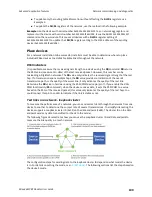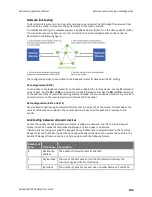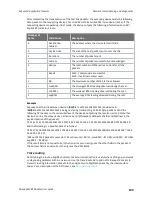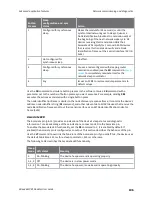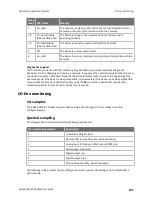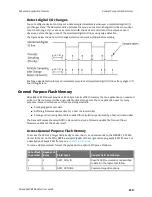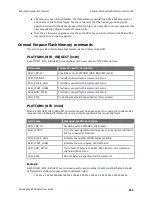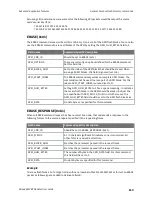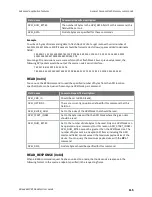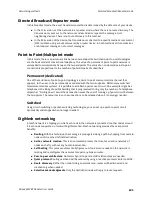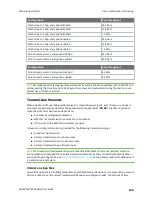
Advanced application features
General Purpose Flash Memory
XBee 868LP RF Modules User Guide
110
Detect digital I/O changes
You can configure devices to transmit a data sample immediately whenever a monitored digital I/O
pin changes state. The
IC
command is a bitmask that you use to set which digital I/O lines to monitor
for a state change. If you set one or more bits in
IC
, the device transmits an I/O sample as soon it
observes a state change in one of the monitored digital I/O lines using edge detection.
The figure below shows how I/O change detection can work with periodic sampling.
Enabling edge detection forces an immediate sample of all monitored digital I/O lines if any digital I/O
lines change state.
General Purpose Flash Memory
XBee 868LP RF Modules provide 119 512-byte blocks of flash memory that an application can read and
write to. This memory provides a non-volatile data storage area that an application uses for many
purposes. Some common uses of this data storage include:
n
Storing logged sensor data
n
Buffering firmware update data for a host microcontroller
n
Storing and retrieving data tables needed for calculations performed by a host microcontroller
The General Purpose Memory (GPM) is also used to store a firmware update file for over-the-air
firmware updates of the device itself.
Access General Purpose Flash Memory
To access the GPM of a target node locally or over-the-air, send commands to the MEMORY_ACCESS
cluster ID (0x23) on the DIGI_DEVICE endpoint (0xE6) of the target node using explicit API frames. For
a description of Explicit API frames, see
To issue a GPM command, format the payload of an explicit API frame as follows:
Byte offset
in payload
Number of
bytes
Field name
General field description
0
1
GPM_CMD_ID
Specific GPM commands are described
in detail in the topics that follow.
1
1
GPM_OPTIONS
Command-specific options.





